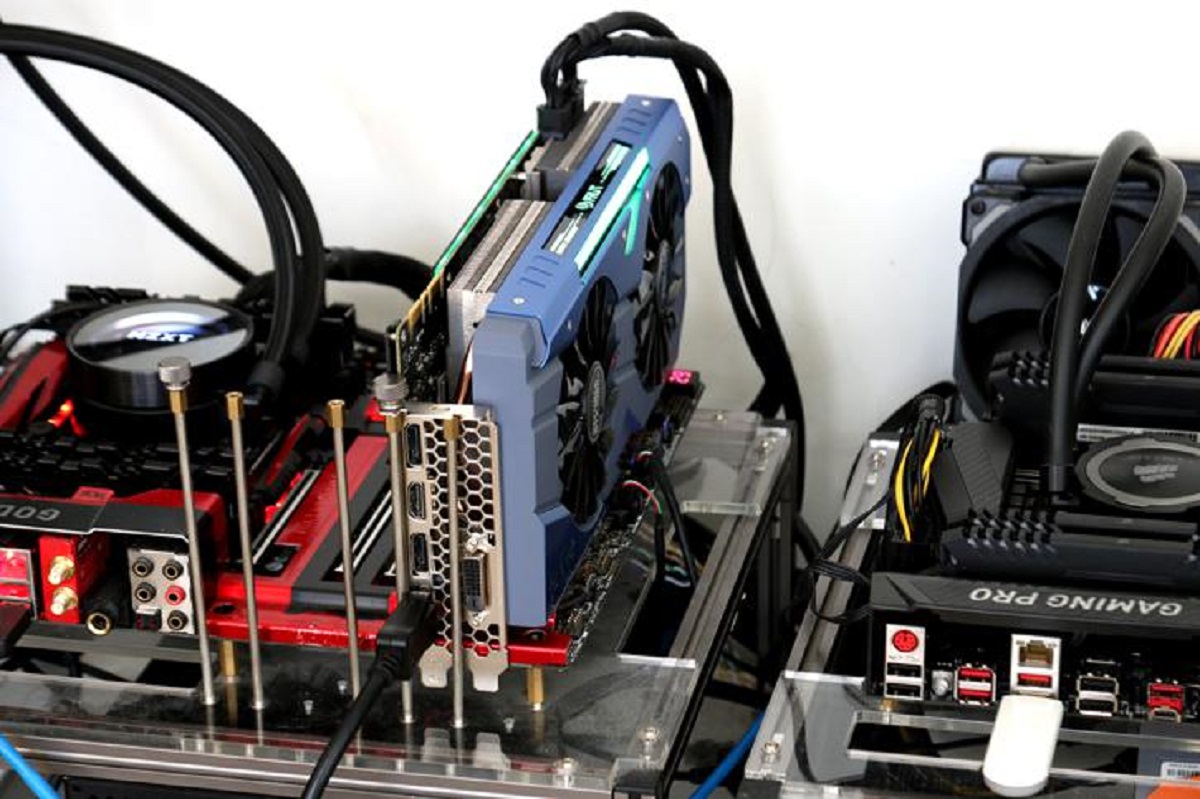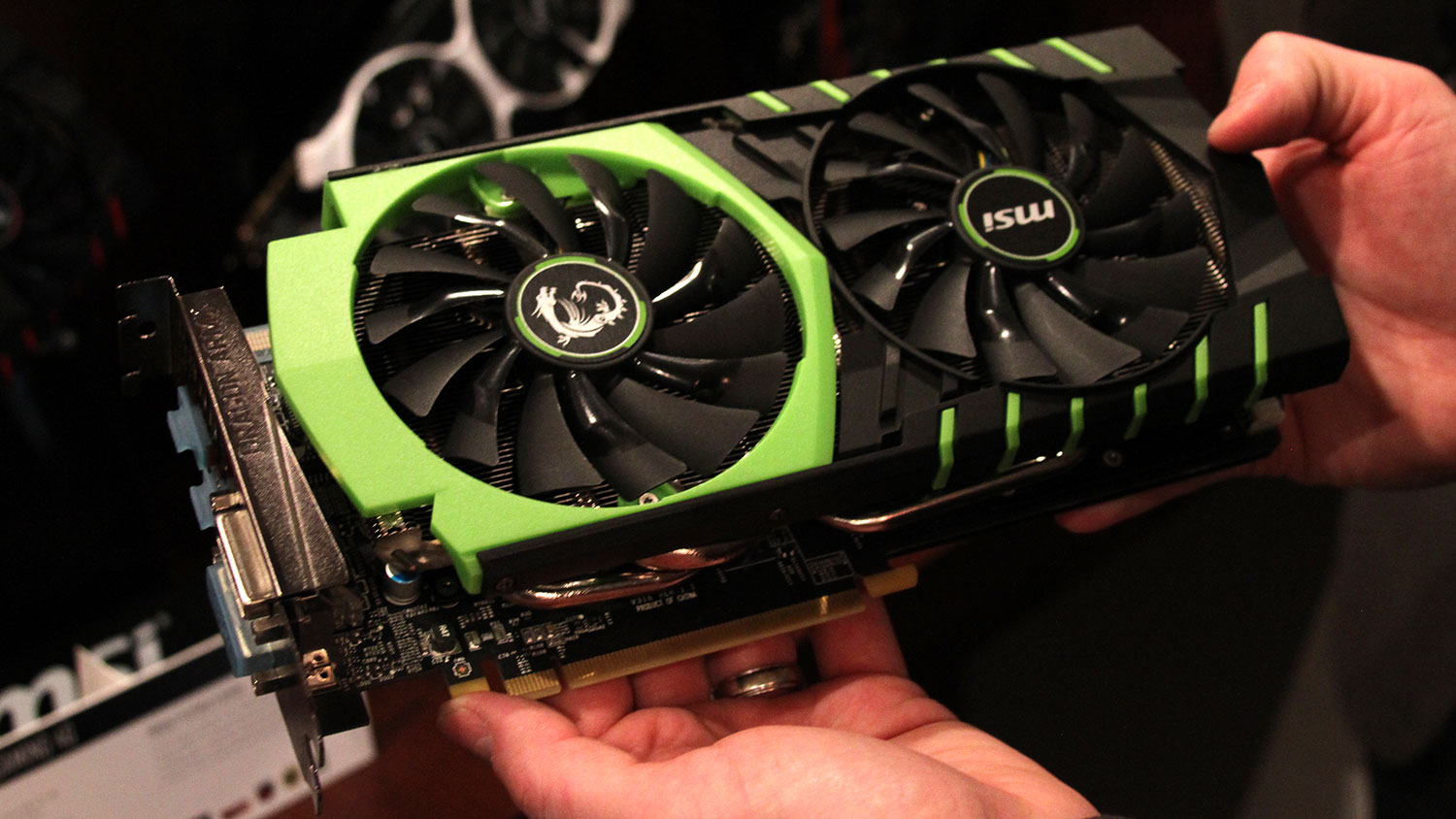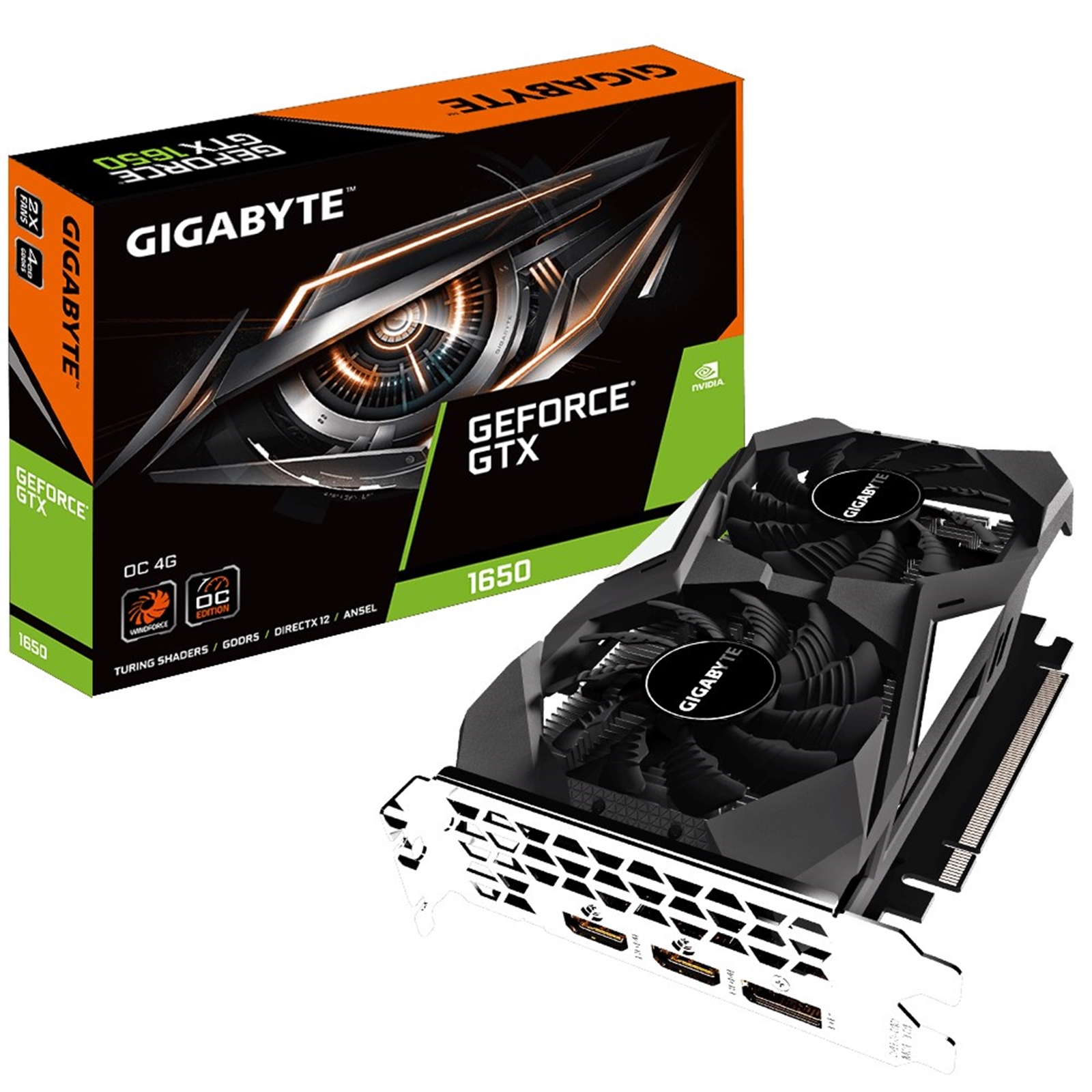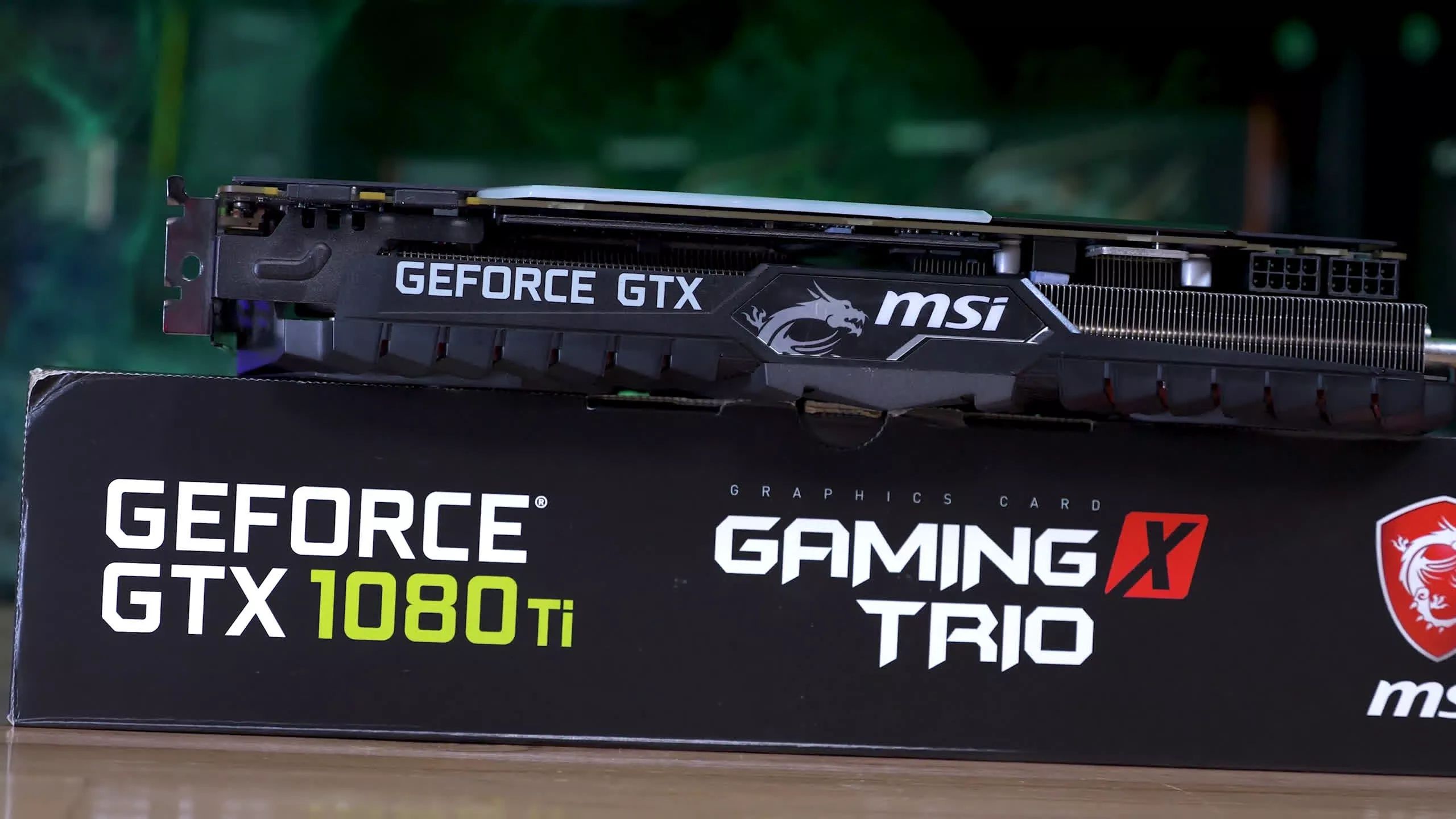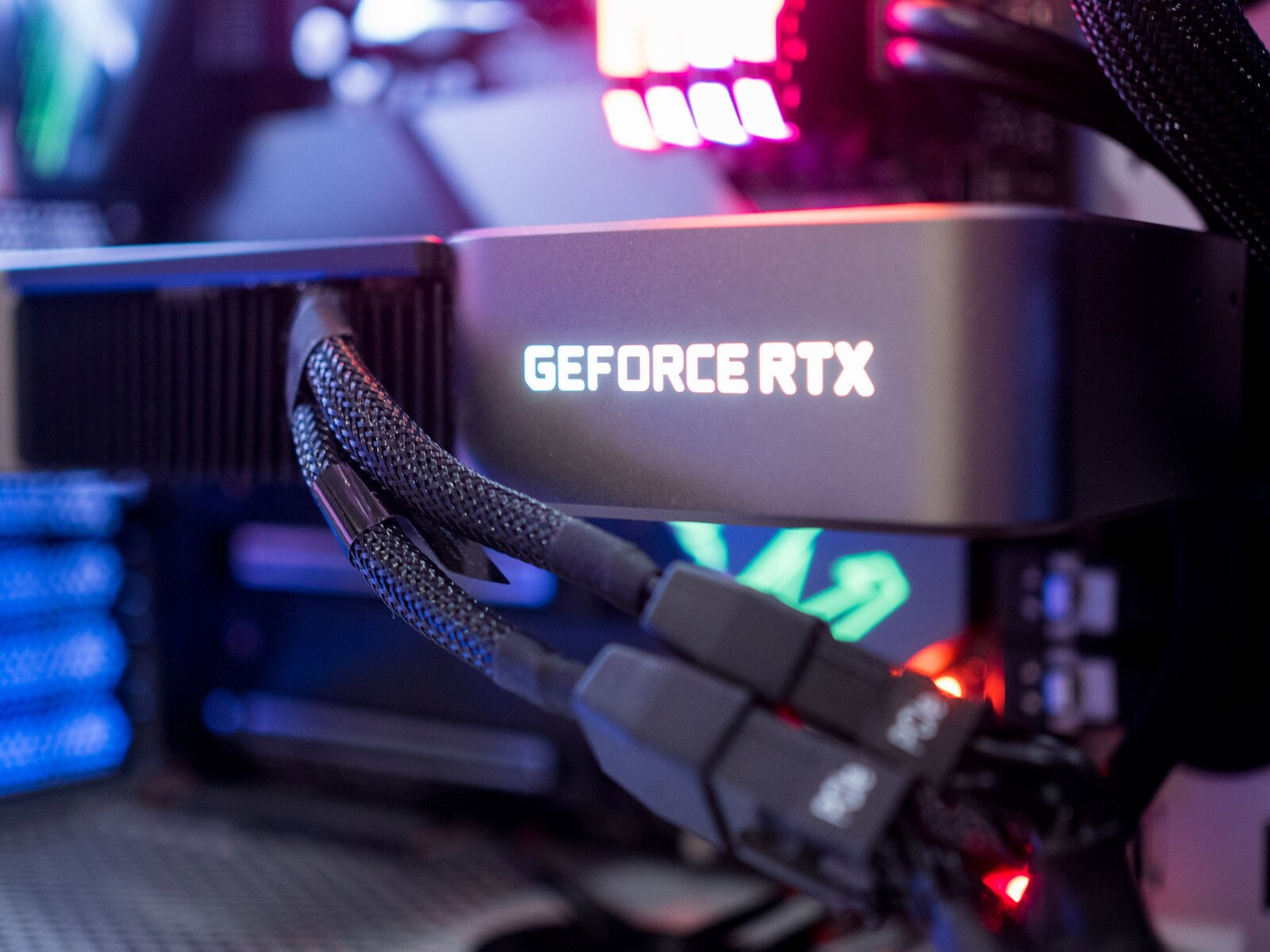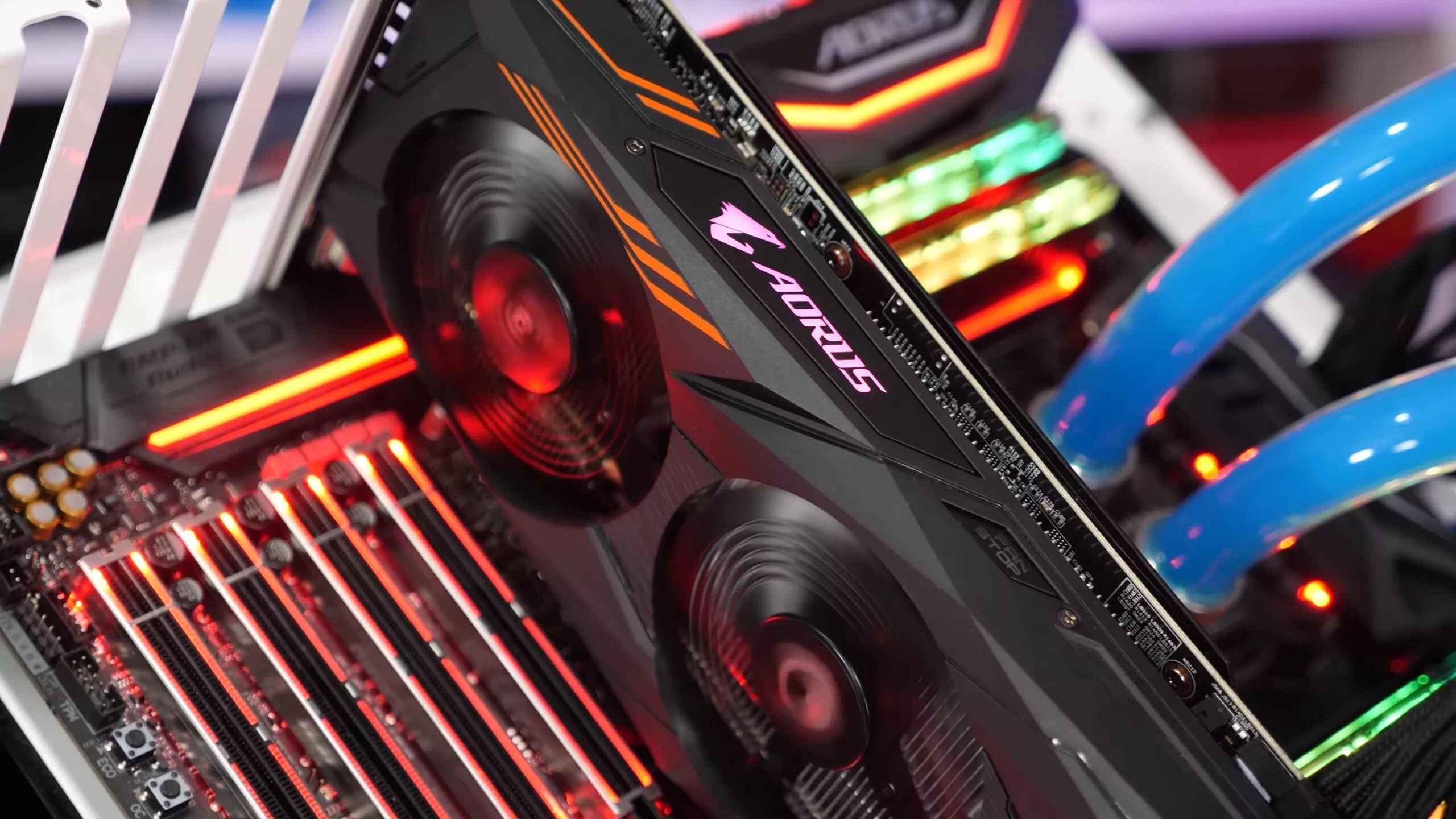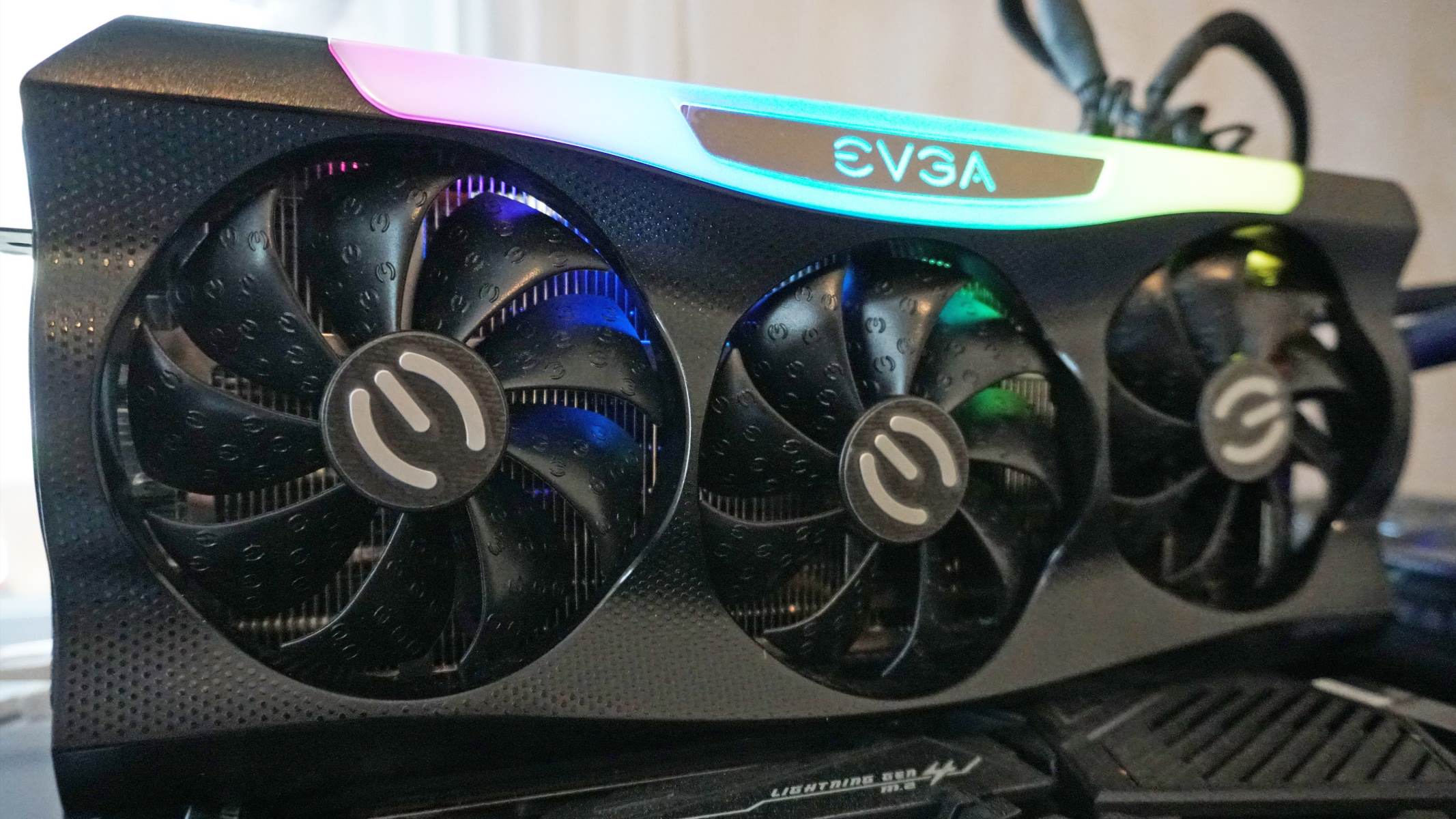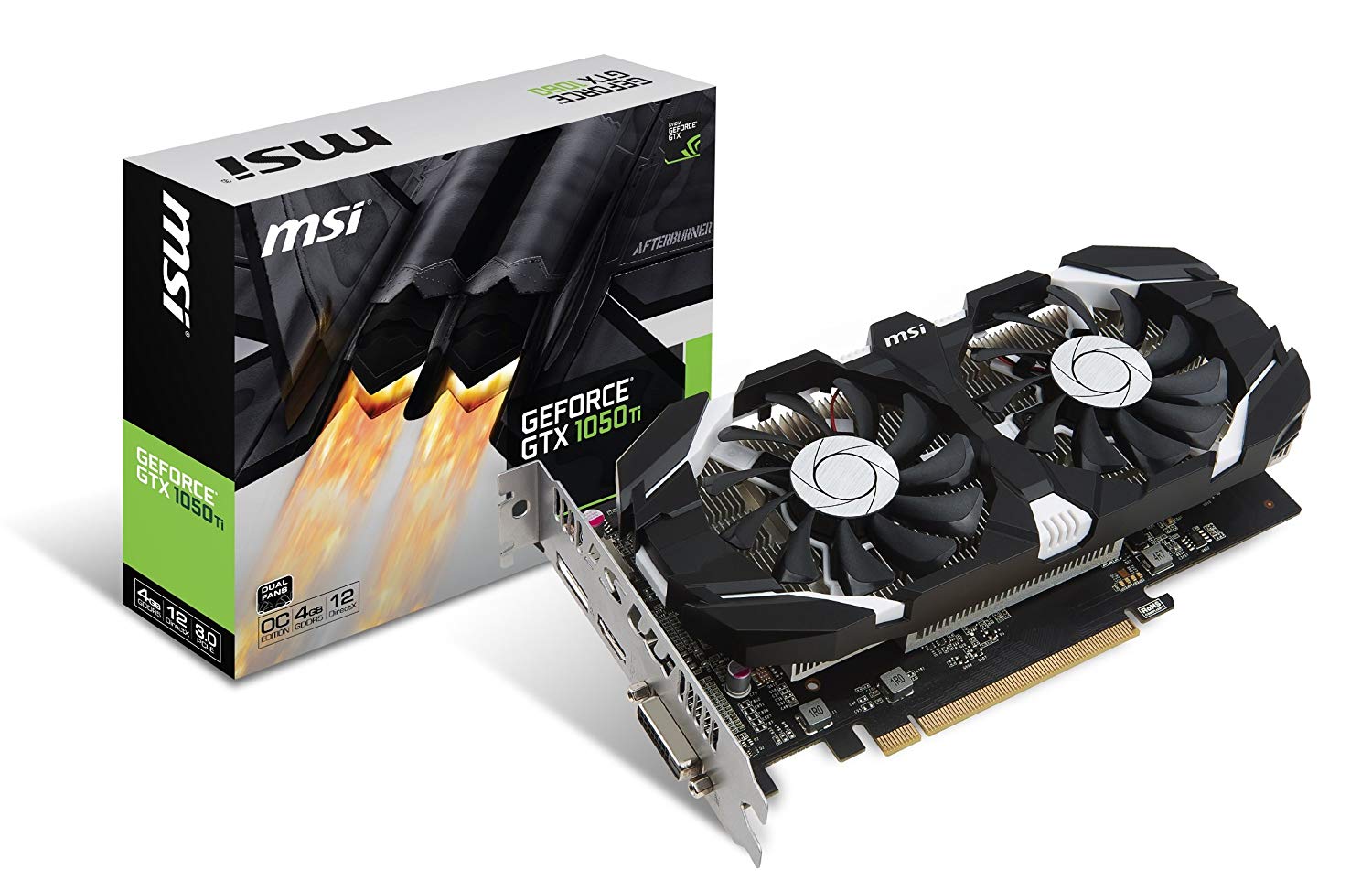Introduction
Welcome to the world of gaming! Whether you’re a seasoned gamer or just starting out, having the right hardware is crucial for an optimal gaming experience. When it comes to building or upgrading your gaming rig, one important component to consider is the power supply unit (PSU). The PSU is responsible for delivering a reliable and stable power supply to all the components in your system, including the graphics card.
In this article, we will specifically focus on the power requirements for the GTX 1080 Ti, one of the most powerful graphics cards available on the market. We will delve into the factors you should consider when choosing a PSU for your GTX 1080 Ti, including the wattage, modularity, and efficiency ratings.
So, if you’re asking yourself, “What PSU do I need for my GTX 1080 Ti?” you’ve come to the right place. Let’s dive in and find out what you need to know to power up your gaming rig and unleash the full potential of your GTX 1080 Ti graphics card!
What is a GTX 1080 Ti?
The GTX 1080 Ti is a high-end graphics card manufactured by NVIDIA, a leading company in the gaming industry. Released in 2017, the GTX 1080 Ti quickly gained popularity among gamers and enthusiasts due to its exceptional performance and capabilities.
With its powerful Pascal architecture and 11GB of GDDR5X memory, the GTX 1080 Ti offers a significant leap in graphics performance compared to its predecessors. It is designed to handle demanding games, virtual reality (VR) experiences, and resource-intensive tasks like video editing and 3D rendering.
Featuring 3584 CUDA cores, a base clock speed of 1480MHz, and a boost clock speed of 1582MHz, the GTX 1080 Ti delivers stunning visuals and smooth gameplay. Its immense processing power allows for realistic graphics, high resolutions, and advanced effects, making it one of the top choices for gamers who want the best possible gaming experience.
In terms of connectivity, the GTX 1080 Ti offers multiple display options, including DisplayPort, HDMI, and DVI. This ensures compatibility with various types of displays and makes it easier to connect your system to different monitors or VR headsets.
Moreover, the GTX 1080 Ti supports NVIDIA’s cutting-edge technologies, such as NVIDIA G-SYNC for smoother gameplay, NVIDIA Ansel for capturing and sharing in-game screenshots, and NVIDIA GameWorks for enhanced graphics and effects in games.
Overall, the GTX 1080 Ti is a powerhouse graphics card that combines impressive performance, advanced features, and future-proof capabilities. Whether you’re a hardcore gamer, a content creator, or someone who simply wants the best visuals on their computer, the GTX 1080 Ti offers a top-notch gaming experience.
Why is the PSU important?
The power supply unit (PSU) is a critical component in any computer system, including gaming rigs. Its main purpose is to convert the AC power from your wall socket into the DC power required by the components in your computer. But why is the PSU so important when it comes to gaming and specifically to powering a high-performance graphics card like the GTX 1080 Ti?
First and foremost, the PSU provides the necessary power to all the components in your system. It ensures a consistent and reliable power supply to the CPU, motherboard, RAM, storage devices, and, most importantly, the graphics card. Without a robust and adequate power supply, your system may experience instability, crashes, and performance issues.
When it comes to gaming, the graphics card is one of the most power-hungry components. GPUs like the GTX 1080 Ti demand a significant amount of power to deliver their maximum performance. Insufficient power can lead to graphical glitches, frame rate drops, and overall poor gaming experience. Therefore, having a powerful PSU that can handle the power requirements of your graphics card is essential.
Another reason why the PSU is crucial is its ability to deliver stable and clean power. Fluctuations or poor quality power can have detrimental effects on your system’s stability and performance. An inadequate or low-quality PSU may result in voltage drops, electrical noise, and power surges that can damage sensitive components, including the graphics card.
Additionally, a reliable and efficient PSU can contribute to the overall longevity and reliability of your system. Investing in a high-quality PSU with proper voltage regulation and protections can help prevent damage to your components, saving you from costly repairs and replacements.
Lastly, a well-chosen PSU can allow for future upgrades and expandability. As technology advances, newer components may have higher power requirements. By investing in a PSU with a higher wattage than currently needed, you can ensure that you have enough headroom for future upgrades without having to replace the PSU.
In summary, the PSU plays a vital role in powering and protecting your gaming system. It provides the necessary power to all components, helps maintain stability and performance, safeguards against damage, and allows for future upgrades. When it comes to powering your GTX 1080 Ti, choosing a reliable and robust PSU is crucial for an optimal gaming experience.
Factors to consider
When it comes to choosing a PSU for your GTX 1080 Ti, there are several important factors to consider. Taking these factors into account will help ensure that you select a PSU that is both compatible and capable of powering your graphics card effectively.
1. Wattage: The wattage is the maximum power output that the PSU can provide. For the GTX 1080 Ti, it is recommended to have a PSU with a wattage of at least 600W. However, it’s always a good idea to have some headroom for potential system upgrades or overclocking. Consider choosing a PSU with 650W or higher to provide ample power for your graphics card and other components.
2. Modularity: Modularity refers to the ability to detach and connect cables as needed. Modular PSUs allow you to connect only the cables you require, reducing cable clutter and improving airflow inside your case. This feature can make cable management easier and result in better overall system aesthetics.
3. Efficiency ratings: Power supplies have efficiency ratings, typically indicated as 80 Plus certifications. The higher the efficiency rating, the more efficiently the PSU converts AC power to DC power, resulting in less wasted energy and heat. Look for PSUs with at least an 80 Plus Bronze certification for optimal efficiency.
4. Connectors: Ensure that the PSU has the necessary connectors to support your system’s components. The GTX 1080 Ti requires at least one 8-pin and one 6-pin power connector. Check the specifications of both your graphics card and PSU to ensure compatibility.
5. Brand and reliability: Choose PSUs from reputable brands known for their quality and reliability. A reliable PSU is essential to ensure stable power delivery and to protect your components from electrical issues. It’s worth investing in a trusted brand to avoid potential problems down the line.
6. Budget: Consider your budget when choosing a PSU. While it is important to invest in a good-quality PSU, you don’t necessarily have to go for the most expensive option. Consider your needs, the power requirements of your components, and read reviews and comparisons to find a PSU that offers a good balance between quality and price.
By considering these factors when choosing a PSU for your GTX 1080 Ti, you can ensure that you select a power supply that can handle the demands of your graphics card, provide stable power delivery, and contribute to the overall performance and longevity of your gaming system.
Power requirements of the GTX 1080 Ti
The GTX 1080 Ti is a powerful graphics card that requires a sufficient power supply to operate at its full potential. Understanding the power requirements of the GTX 1080 Ti is essential when choosing a compatible PSU.
The GTX 1080 Ti has a typical power consumption of around 250W under load. However, it’s important to note that the actual power consumption may vary depending on factors such as overclocking, system configuration, and the specific model of the graphics card.
In addition to the power consumed by the graphics card itself, you also need to consider the power requirements of other components in your system. This includes the CPU, motherboard, RAM, storage devices, and any additional peripherals. It’s recommended to estimate the total power consumption of your entire system to ensure that the PSU has sufficient capacity.
When determining the power requirements, it’s generally a good practice to provide some headroom for future upgrades or overclocking. It’s recommended to have a PSU with a wattage that exceeds the total power consumption of your system by around 10-20%.
For example, if you estimate that your system’s total power consumption is around 400W, it’s advisable to choose a PSU with a wattage of at least 450-480W. This provides enough power for your GTX 1080 Ti and other components, while also allowing room for any future upgrades or overclocking.
Keep in mind that the power requirements may vary depending on the specific model of the GTX 1080 Ti. Some custom-designed models or cards with higher factory overclocks may require slightly more power compared to the reference design. Be sure to check the manufacturer’s specifications for the specific card you have or plan to purchase.
Lastly, it’s worth mentioning that the power requirements of the GTX 1080 Ti may also impact the power supply’s efficiency. Running a PSU close to its maximum capacity may result in reduced efficiency and potentially higher heat output. Therefore, choosing a PSU with a slightly higher wattage than what’s required by your system can help optimize efficiency and ensure a stable and reliable power supply for your GTX 1080 Ti.
Recommended PSU wattage
Choosing the right wattage for your power supply unit (PSU) is crucial to ensure that it can adequately power your GTX 1080 Ti and other components in your gaming system. While the actual power requirements may vary depending on various factors, including system configuration and usage, there are some general recommendations to consider.
For the GTX 1080 Ti, NVIDIA recommends a minimum PSU wattage of 600W. This should be sufficient to power the graphics card along with other components in a typical gaming setup. However, it’s important to note that this is a minimum requirement, and it’s often advisable to choose a PSU with slightly higher wattage to allow for headroom.
A PSU with a wattage of 650W or higher is generally recommended for the GTX 1080 Ti. This provides enough power for the graphics card to function at optimal levels, even under heavy loads or when overclocking is involved. Additionally, having a higher wattage PSU can also future-proof your system for potential upgrades or the addition of more power-hungry components in the future.
It’s worth mentioning that the recommended wattage can differ depending on the specific model of the GTX 1080 Ti you have or plan to purchase. Some custom-designed models or factory-overclocked variants may require slightly more power compared to the reference design. Therefore, it’s crucial to check the manufacturer’s specifications for the specific card you own or are considering.
Remember that the wattage recommendation is not just for the graphics card itself but for the entire system. Take into account the power requirements of other components, such as the CPU, motherboard, RAM, storage devices, and peripherals, when determining the required PSU wattage. Estimating the total power consumption of your system will help ensure that the PSU has enough capacity to handle the load.
Ultimately, choosing a PSU with a wattage that exceeds the total power consumption of your system by around 10-20% is a good practice. This provides a comfortable margin for efficient and reliable power delivery and allows for any future upgrades or overclocking. Investing in a quality PSU with the right wattage is essential to ensure the stable operation of your GTX 1080 Ti and the longevity of your gaming system.
Choosing the right PSU
When it comes to choosing a power supply unit (PSU) for your GTX 1080 Ti, it’s important to consider several factors to ensure compatibility, reliability, and optimal performance. Here are some key points to keep in mind:
1. Wattage: Select a PSU with a wattage that meets or exceeds the power requirements of your entire system. For the GTX 1080 Ti, a PSU with a wattage of at least 650W is recommended. This ensures that your graphics card and other components receive ample power for stable operation.
2. Brand and reliability: Choose PSUs from reputable brands known for their quality and reliability. Well-known brands often prioritize components like capacitors, which can contribute to better power delivery and longevity of the PSU. Reliable PSUs offer better voltage regulation, protection features, and reduced risk of component damage due to power fluctuations or failures.
3. Modularity: Consider whether you want a modular or non-modular PSU. Modular PSUs offer the flexibility to detach and connect cables as needed, allowing for improved cable management and airflow. On the other hand, non-modular PSUs have fixed cables, which may lead to a cluttered case. Choose based on your preferences and the aesthetics of your system.
4. Efficiency: Look for PSUs with higher efficiency ratings, such as 80 Plus Bronze, Silver, Gold, or Platinum. More efficient PSUs convert more of the incoming AC power into usable DC power, resulting in lower energy waste, reduced heat output, and potential savings on electricity bills. Higher efficiency also contributes to overall system stability.
5. Certifications and protections: Ensure that the PSU has necessary protections like over-voltage, over-current, and short-circuit protection to safeguard your components. Look for certifications like UL (Underwriters Laboratories) or TUV (Technischer Überwachungsverein) to ensure compliance with safety and quality standards.
6. Noise level: Consider the noise level of the PSU, especially if you prefer a quieter gaming experience. PSUs with larger, slower-spinning fans and advanced cooling technologies tend to produce less noise. Read reviews and check manufacturer specifications to find a PSU that strikes a balance between cooling efficiency and noise output.
7. Price: While it’s important to invest in a high-quality PSU, consider your budget and find a PSU that offers a good balance between performance, reliability, and price. Higher-priced models may offer advanced features and better build quality, but there are often affordable options that can meet your power requirements effectively.
By considering these factors, you can choose a PSU that is well-suited for your GTX 1080 Ti and supports the overall performance and efficiency of your gaming system. Remember that the PSU serves as the backbone of your system’s power supply, so investing in a reliable and compatible unit ensures stable operation and protects your valuable components.
Modular vs Non-modular PSUs
When choosing a power supply unit (PSU) for your GTX 1080 Ti, one decision you’ll need to make is whether to opt for a modular or non-modular PSU. Both options have their advantages and considerations, so let’s explore the differences between the two:
1. Modular PSUs:
Modular PSUs offer the flexibility of detachable cables, allowing you to connect only the cables that are necessary for your system. This results in less cable clutter inside your PC case, improving airflow and making cable management easier. With modular PSUs, you’ll only need to connect the cables required for your specific setup, reducing the excess cables that can potentially hinder airflow or obstruct components.
Furthermore, modular PSUs enable cleaner and more organized cable routing, which not only enhances the aesthetics of your build but also ensures efficient cooling and proper airflow. This can be especially beneficial for high-performance systems, like those using the GTX 1080 Ti, where maintaining optimal temperatures is crucial for consistent performance.
However, it’s worth noting that modular PSUs often come at a higher cost compared to non-modular PSUs due to their additional features and convenience. Additionally, there may be a slight increase in power loss due to the additional connectors and cables required for modularity.
2. Non-modular PSUs:
Non-modular PSUs come with fixed cables that are permanently attached to the unit. This means that all the cables, including those that may not be necessary for your specific system configuration, are bundled together. While this may result in a less neat and organized cable layout, non-modular PSUs are generally more affordable compared to their modular counterparts.
Despite the potential drawbacks in terms of cable management, non-modular PSUs still offer reliable power delivery and stable performance. They are well-suited for users who prioritize budget-friendliness over customization and neatness in cable routing. If you have a standard build configuration with fixed power requirements, a non-modular PSU may be a reasonable option that meets your needs.
Ultimately, the decision between a modular and non-modular PSU depends on considerations such as your budget, preference for cable management, and the overall aesthetics of your system. While a modular PSU provides more flexibility and neater cable routing, a non-modular PSU can offer a cost-effective solution without sacrificing reliability and performance.
It’s important to note that regardless of whether you choose a modular or non-modular PSU, ensure that the unit you select has the appropriate wattage, efficiency ratings, and necessary protections for your system. High-quality PSUs, regardless of their modularity, are essential for powering and protecting your high-performance components like the GTX 1080 Ti.
Efficiency Ratings
Efficiency ratings are an important consideration when selecting a power supply unit (PSU) for your GTX 1080 Ti. The efficiency rating of a PSU indicates how effectively it converts the incoming AC power from your wall socket into the DC power required by your components.
PSUs receive efficiency ratings based on certifications such as 80 Plus (standard, Bronze, Silver, Gold, Platinum, or Titanium). These certifications indicate the PSU’s energy efficiency, with higher ratings representing better efficiency and less energy wastage.
1. 80 Plus Standard: The 80 Plus Standard certification requires PSUs to exhibit a minimum efficiency of 80% at 20%, 50%, and 100% of rated load. While this is the basic level of certification, it still signifies a decent level of energy efficiency.
2. 80 Plus Bronze: The 80 Plus Bronze certification sets a higher efficiency requirement, with PSUs needing to achieve at least 82% efficiency at 20% and 100% loads, and 85% efficiency at 50% load.
3. 80 Plus Silver: The 80 Plus Silver certification raises the bar further, mandating a minimum efficiency of 85% at 20% and 100% loads, and 88% efficiency at 50% load.
4. 80 Plus Gold: The 80 Plus Gold certification indicates a significant improvement in energy efficiency, with PSUs required to achieve at least 87% efficiency at 20% and 100% loads, and 90% efficiency at 50% load.
5. 80 Plus Platinum: PSUs with the 80 Plus Platinum certification exhibit extremely high energy efficiency. They must achieve at least 90% efficiency at 20% and 100% loads, and 92% efficiency at 50% load. This level of efficiency can result in lower energy consumption, reduced heat output, and potentially lower electricity bills.
6. 80 Plus Titanium: The highest-tier certification is 80 Plus Titanium. PSUs with this certification deliver exceptional energy efficiency, with requirements of 90% efficiency at 10% and 20% loads, 94% efficiency at 50% load, and 90% efficiency at 100% load. PSU models with this certification are generally the most efficient and can offer significant energy savings, especially for systems with high power demands.
When selecting a PSU, it’s important to note that higher efficiency ratings often come with higher prices. However, investing in a more efficient PSU can be worthwhile in the long run, as it can result in lower electricity bills and reduced heat output, which can have a positive impact on system stability and lifespan.
Ultimately, the choice of efficiency rating depends on your specific needs and budget. If you’re looking for a balance between cost and efficiency, PSUs with 80 Plus Bronze or 80 Plus Gold certifications are popular choices for most gaming systems, including those powered by the GTX 1080 Ti.
By considering the efficiency ratings, you can select a PSU that aligns with your power requirements, budget, and sustainability preferences. An efficient PSU not only provides reliable power to your components but also contributes to a greener and more environmentally friendly gaming setup.
Final Thoughts
Choosing the right power supply unit (PSU) for your GTX 1080 Ti is crucial for a smooth and efficient gaming experience. The PSU plays a vital role in providing stable power to your graphics card and other components, ensuring optimal performance and protecting your investment.
Consider the power requirements of your entire system, including the GTX 1080 Ti and other components, and select a PSU with an appropriate wattage that provides sufficient headroom for future upgrades. A PSU with a wattage of at least 650W is generally recommended for the GTX 1080 Ti.
Think about modularity as well. Modular PSUs offer the advantage of flexible cable management, reducing clutter and improving airflow inside your system. However, they usually come at a higher price compared to non-modular PSUs, which may be a more budget-friendly option for users who prioritize cost over cable management convenience.
Efficiency ratings are also worth considering, as they indicate how effectively the PSU converts AC power into DC power. Higher efficiency ratings, such as 80 Plus Gold or Platinum, can result in lower energy consumption, reduced heat output, and potentially lower electricity bills in the long run.
Lastly, make sure to choose a PSU from a reputable brand known for its reliability and quality. Investing in a reliable PSU protects your valuable components from power fluctuations and ensures stable operation, contributing to the longevity and performance of your GTX 1080 Ti and gaming system as a whole.
Overall, taking the time to research and select the right PSU for your GTX 1080 Ti is an important step in building or upgrading your gaming rig. By considering factors such as wattage, modularity, efficiency ratings, and brand reliability, you can ensure a reliable and efficient power supply that elevates your gaming experience and unlocks the full potential of your GTX 1080 Ti graphics card.







